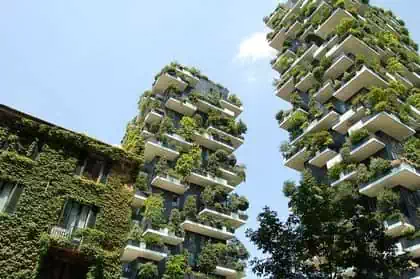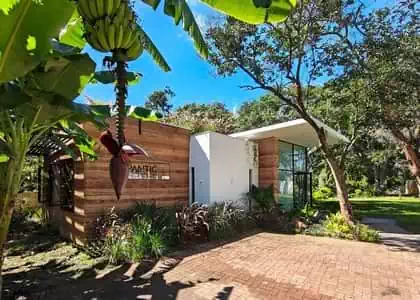Sustainable design By-laws in Zimbabwe
How Zimbabwe Can Develop and Implement Laws and Regulations for Sustainable Design Here is a roadmap with possible steps. Some are already underway; others will need deliberate action.


Phases and Steps for Sustainable design by-law implementation
1. Preliminary research & policy framing • Map current state: energy-use of buildings, water usage, existing standards/by-laws. • Study climate zones in Zimbabwe (e.g., north vs. south, high altitude, hot/dry, etc.), building materials availability, supply chains. • Cost-benefit analysis: what sustainable features bring in savings, health, environmental benefit. • Review international best practice (green building codes from similar climates, e.g. Kenya, South Africa, other African countries).
2. Policy design & stakeholder consultation • Develop policy documents (Green Papers/White Papers) that set out the objectives: e.g. energy efficiency targets, water efficiency, embodied carbon, ventilation, indoor quality, renewable energy integration. • Engage stakeholders: architects, developers, engineers, construction firms, local government, homeowner groups, financial institutions. Solicit feedback on feasibility, barriers. • Ensure equity, affordability, and inclusion are integrated (e.g. cost constraints for low-income housing).
3. Drafting legislation & standards • Draft an Energy Efficiency Act or amend existing building laws to include minimum energy performance standards (for new and existing buildings) and requirements for sustainable design, materials, water use. • Develop building codes/green building standards (model codes) which specify minimum requirements: insulation, glazing, orientation, shading, ventilation, solar access, water harvesting, etc. • Incorporate provisions for audits, monitoring, penalties for non‐compliance, incentive schemes (tax breaks, subsidies, etc.). • Include local climate zone and building material considerations so laws are contextual.
4. Pilot projects and capacity building • Apply new codes in pilot zones or projects (public schools, public buildings) to test implementation challenges. • Train architects, engineers, building inspectors on sustainable building and compliance. • Develop a guidebook or manual for design and construction of sustainable buildings tailored to Zimbabwe’s climate zones. (This is already in progress via UN-Habitat)
5. Legislative process & formal enactment • Introduce the Bill into Parliament (after Cabinet approval). • Debate, possibly public hearings, committee reviews, revisions. • Once passed by both Houses and signed by the President, publish law. • Prepare necessary subsidiary legislation / regulations, by-laws to local authorities.
6. Enforcement, monitoring, and compliance mechanisms • Set up regulatory bodies or assign clear responsibilities: e.g. which agency handles inspections, certifications, audits. • Inspections / approvals of plans before construction; spot inspections during and after construction. • Energy audits for certain classes of buildings. • Penalties for non-compliance; incentives for compliance. • Monitoring, reporting, and evaluation: collect data to assess whether codes are having desired effects; adjust as needed.
7. Incentives and finance mechanisms • Tax incentives, subsidies or rebates for green building materials, solar energy, water harvesting systems etc. • Low interest loans or green financing through banks, international donors. • Public procurement rules that government buildings must meet high sustainable standards, setting example. • Certification schemes (voluntary to start, possibly gradually mandatory for certain building classes).


Legal Tools and Provisions to Include
When drafting laws and regulations, the following legal tools and features should be included: •Minimum Energy Performance Standards (MEPS) – required for new buildings (and gradually for existing buildings or at trigger events, e.g., sale, renovation). •Mandatory energy audits and certification for certain building categories and green architecture. •Specification of building envelope requirements (insulation, shading, thermal mass, glazing) tied to Zimbabwe’s climatic zones. •Water efficiency standards, rainwater harvesting, greywater reuse. •Renewable energy integration, e.g. solar for heating or electricity, where feasible. •Sustainable material use and waste management – requirements to use locally sourced, low-carbon or recycled materials, and to manage construction waste. •Resilience standards – flood risk, stormwater management, heat mitigation (shade, green roofs etc.), natural ventilation. •Indoor environmental quality – ventilation, daylighting, air quality. •Definitions and scope – specify which buildings are covered (residential, commercial, industrial; sizes; new vs existing; public vs private). •Enforcement and penalties – define sanctions for non-compliance, incentives for compliance. •Monitoring, reporting, update provisions – laws should require that performance is measured and that the standards are reviewed and tightened periodically.
Implementation Considerations
• Phased Implementation: Because of cost and capacity constraints, roll out in phases. For example, start with all new public buildings, then commercial buildings, then residential, and gradually retrofit existing stock or require upgrades at major renovation.
• Training and Certification: Build up skills of architects, engineers, contractors, building inspectors in sustainable practices. Accredited energy auditors or sustainable building assessors are needed.
• Public Awareness and Uptake: Campaigns to inform developers, home-owners, designers about benefits; demonstration projects to showcase savings and attractiveness.
• Financial Mechanisms: Subsidies/grants, financial support, favorable mortgage terms for certified green buildings. Perhaps tax incentives. Also donor support and international climate finance can be leveraged.
• Local Adaptation: Zimbabwe has various climatic zones; laws should allow or require designs responsive to local climate (orientation, insulation, passive solar, ventilation, etc.), and take account of local materials and construction traditions.
• Integration with Existing Laws and By-laws: Use current building/urban planning laws, local by-laws (e.g., Urban Councils Act, planning schemes) to embed requirements; ensure consistency and avoid conflicts. The Urban Councils Act already gives councils power to make by-laws for design, planning, construction etc.




Timeline Suggestion
Here is a possible timeline for implementation (this is indicative; actual timing depends on political will, funding, institutional capacity):
• Year 1: Research & mapping; stakeholder consultations; policy drafts; capacity mapping.
• Year 2: Drafting of legislation, green building codes/standards; pilot projects; training of relevant personnel; early incentive schemes; begin public awareness campaigns.
• Year 3: Introduce Bill to Parliament; approve legislation; begin enforcement for selected building categories (e.g. public buildings, large commercial); begin certification systems; roll out incentives more broadly.
• Years 4-5: Expand mandatory compliance to more building types; retrofit programmes; monitoring & evaluation; adjust codes based on experience; improve enforcement; full integration into planning and local by-laws.
Conclusion
Zimbabwe is at a critical juncture where climate change pressures, energy inefficiencies, and rising costs demand decisive action in the built environment. Laws and regulations governing sustainable building are not just environmental or “green” luxuries; they have profound implications for health, economic growth, equity, and resilience. Zimbabwe already has many of the pieces in place: a new Energy Efficiency Policy, moves toward green building standards, institutional players like GBCZ, UN-Habitat engagement. What remains is to solidify these into binding law: clear legislation, codes, enforcement, incentives, and capacity. If Zimbabwe can build a legally enforceable framework for green buildings, with local adaptation, stakeholder engagement, and monitoring, it can dramatically reduce its carbon footprint, lower energy costs for citizens, improve indoor environments, and meet its national and international climate obligations — all while fostering innovation in construction materials, design, and finance.
Address
2.99 Hobourne Hill
Borrowdale
Harare, Zimbabwe
Contacts
Email: info@panarch.info
Phone: +263 (24) 2870 232
